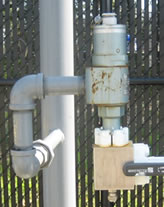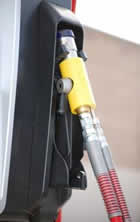By Leo Thomason, Executive Director, NGVi

Routine maintenance is critical to keep CNG fueling stations operating at their designed performance levels. But what about safety? How do CNG fueling station operators ensure that stations are safe? The answer lies in the routine CNG fueling station safety evaluation.
The reasons for and benefits of CNG fueling station safety evaluations would seem obvious. First, CNG fueling station operators want to ensure safety of both their employees and customers. To ensure that safe working environment, the U.S. Occupational Safety and Health Administration, otherwise known as OSHA, requires that employers maintain a safe working environment for all employees. This OSHA requirement applies to CNG fueling stations in the same manner as it applies to manufacturing plants and office buildings. And the only way to ensure a safe environment for employees (and customers) at a CNG fueling station is to perform a periodic safety evaluation.
Secondly, CNG fueling stations store and dispense fuel at very high pressures—4,200 to 4,500 psi. These pressures require more than casual treatment of the equipment and systems that make up the station. In addition, natural gas is also flammable, so specific safety systems at the CNG station are required that should be tested periodically to ensure operability.
Lastly, CNG fueling station safety evaluations provide an additional check on required equipment maintenance. For example, if a safety evaluation reveals worn dispenser hoses, the station operator has an opportunity to replace them before they cause a dispenser outage—or worse, a catastrophic failure that might lead to injury. In this way, a CNG fueling station evaluation gives the station operator an extra layer of assurance that the station will perform reliably day in and day out.
I am often asked whether CNG fueling station safety evaluations are required by code, and the short answer is no, not specifically. However, there is no way to be able to ensure safety of the CNG fueling station, or to document the safe working environment required by OSHA, without conducting periodic safety evaluations.
Since there is no specific code governing CNG fueling station evaluations, the frequency of evaluations is left up to each station operator. However, industry best practice recommends that CNG fueling station evaluations be conducted at least every six months.
As a side note, beginning in 2016, NFPA-52 requires that every CNG fueling station (existing or newly planned) have an active, documented maintenance plan—which should include the specifications and frequency of safety evaluations.

It is important that the technician or other person responsible for the evaluation use a form—hard copy or electronic—that is specified in the CNG fueling station maintenance plan so that all the necessary data is captured. The form should include the name of each component inspected, and should provide the ability to record any repairs that need to be made, the name or job title of the person responsible to make the repairs, and the actual date the repairs are made. This type of record keeping ensures that, in the case of any incident, there are historical records to document that the CNG fueling station operator took the necessary steps to ensure safety at the station.

Because of the safety systems required by code, CNG fueling stations can be extremely safe. However, as discussed above, CNG fueling station safety evaluations are a crucial step. They require knowledge and skill to perform, but they ultimately help meet the goal of providing CNG fueling that is not only reliable but safe.
________________________
In April, NGVi is offering two opportunities to learn more about CNG fueling station safety evaluations.
Join us April 6 at 11:30 a.m. for a one-hour Tech Talk titled When, Why and How to Conduct a CNG Fueling Station Safety Evaluation.
Or register for our comprehensive two-day CNG Fueling Station Operation and Maintenance Training, April 26-27 in Las Vegas, NV

